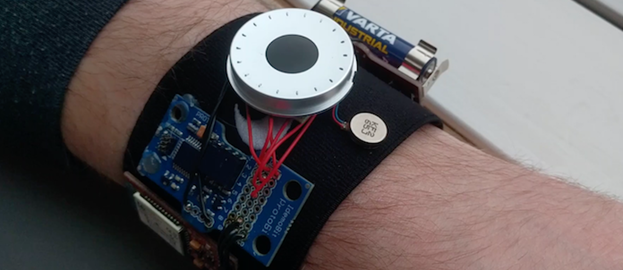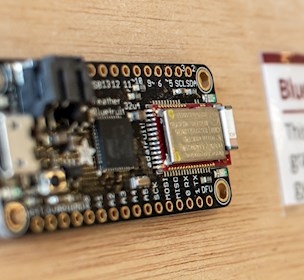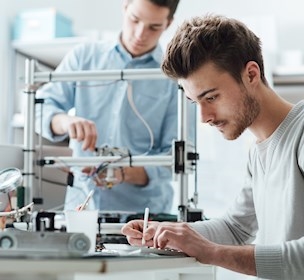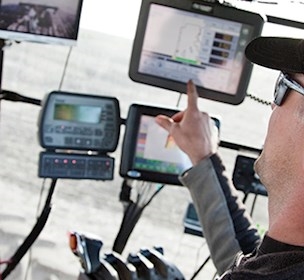IoT as driver for a digital health sector
The expansion of the Internet of Things (IoT) has taken hold, and it will also affect our health sector. This requires focus on responsible design, safety, and reliability.
Still more is becoming digital, and the next big wave is driven by digitalisation of our things: devices, tools and machines are being linked to the internet, forming the so-called "Internet of Things" (IoT). In 2023, it is predicted that we will have 43 billion IoT "things", which is three times more than in 2018.
While the most widespread use of IoT in Denmark is currently things like smart bulbs and lamps, IoT is starting to gain speed after many years of hype and expectations. New technologies for mobile communications, like 5G networks, are helping things to get online. New kinds of sensors give these devices the ability to capture new data, and technologies for analysing that data have become far more advanced, such as through artificial intelligence (AI) and big data technologies.
IoT in the health sector has incredible potential
The health sector is not an area where we want to see grand technological experiments, but even so, IoT is making rapid progress into this field.
While IoT will never replace healthcare professionals and their human hands, IoT can serve as a kind of "big mother" that supports and assists the healthcare sector. In the future, we will see IoT used to optimise logistics and operations at hospitals, monitor critical equipment, and monitor patients remotely.

In hands, on bodies, on equipment and in beds
Alarms from lifts, hospital beds and respirators, and MRI scanner maintenance, are consequences of IoT in the health sector that are invisible to patients. However, in the long term, we, too, will begin noticing new possibilities.
We at FORCE Technology have worked on designing and developing IoT health solutions for the future, in collaboration with Danish businesses. For example, a small, discreet, electronic plaster for heart monitoring. The patient hardly notices it, and it sends data to doctors after an event like an arrhythmia. Or, the smart pillboxes of the future, helping patients to take the right medicines at the right times.
Together with hospitals, doctors and physiotherapists, we've worked on sensor-supported telemedicine services for COPD and back patients, and we've developed an armband for mental support and behavioural regulation. We've even worked on small, smart contact lenses with built-in sensors for monitoring diabetes patients.
For some, technologies like these might seem scary. However, when we start with humans and their living situations, we can design and use technologies to give more patients access to treatment, ensuring both prevention and greater insight into their situations.
Self-monitoring kick-started a wave
If we were to look into a crystal ball and predict how IoT will develop in the health field, we would keep an eye on the private health and fitness market.
In 2009, Fitbit launched one of the world's first digital health trackers. At the time, it was little more than an advanced step counter with the ability to save data to a smartphone. This started a "self-measurement" wave (see: “You Are What You Measure” [in Danish: Det man måler er man selv] by Anders Høeg Nissen.) with tech, sports and health enthusiasts that wanted to keep track of their own health. Apple quickly picked up on the idea and worked with Nike to put smart step counters in shoes. After that, loads of so-called "quantified self" technologies began appearing.
Sensors follow our behaviour
Today, digital step counters are so widespread that they are integrated in most smartphones, and smartphones can have as many as 18 sensors to constantly monitor our behaviour. Sensors have become so small and widespread that a ring on your finger can measure your sleep patterns, skin surface temperature, and blood oxygen saturation.
In Denmark, a Danish IoT start-up called Alliance Health has collaborated with Taiwan's iWEECARE to create a clinically approved body temperature monitor for monitoring children. Now, particularly in light of the COVID-19 situation, an acute need for rapid fever detection at a safe distance has arisen. As a result, many pilot projects in collaboration with international health authorities are ongoing.

Health data with security and privacy requirements
It will take some time before our smartphones can analyse blood samples, or before we can go to an AI doctor with data from our own blood pressure monitors. We have, however, seen coronavirus chatbots and services that analyse private individuals' DNA entirely outside the healthcare system. Google purchased Fitbit in 2019, no doubt to secure greater involvement in the health sector.
These developments lead us to an important question about trust, particularly in regards to the management of our data. As with many other new technologies, IoT technology can certainly be abused, so we should be particularly careful with our health data.
While new sensors, networking technology, and good design may seem to be the greatest challenges for IoT in the healthcare system, trust, security and privacy are at least as important, if not more. In developing IoT technologies for the future of healthcare systems, careful thought and responsibility are indispensable.
Related information

Advanced real-time monitoring in supply chains
/Article
How will supply chains be monitored and overseen in the future?

Developing IoT products
/Article
How to develop IoT products in predefined IoT ecosystems.

IIoT & Industry 4.0
/Article
Overcome the barrier and get started - find out how.

